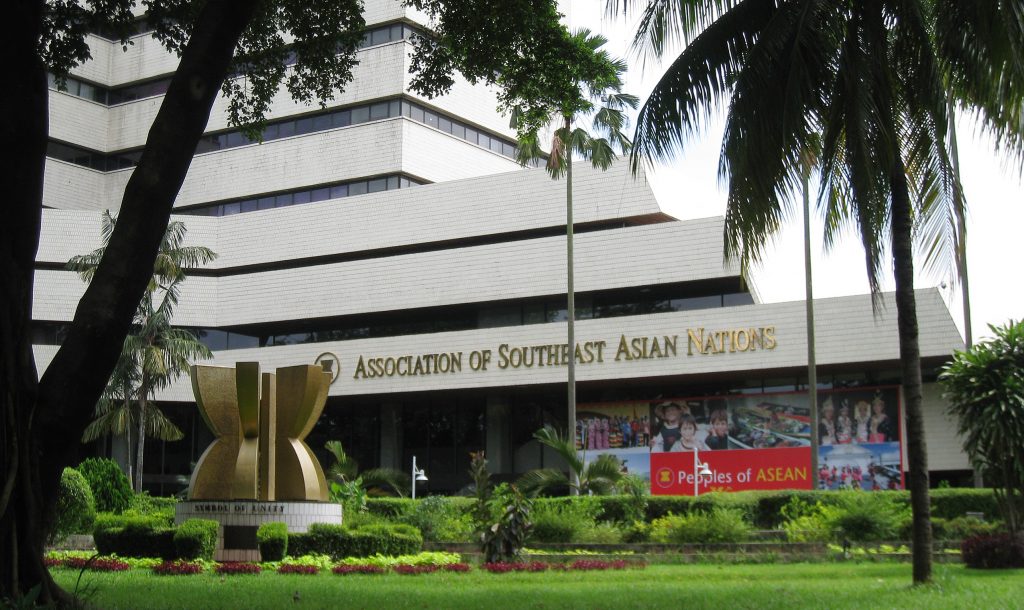The EU and ASEAN share some relevant aspects but at the same time important differences; both are born out of international (to counter threats from bordering communist powers) and internal (to avert new almost brotherly conflicts) security needs and grow mainly as economic entities: the EU because of the French veto to the European Defence Community in August 1954, the ASEAN because the “domino” theory did not actualize due to the Sino-Soviet conflict at the end of the 1960s and the 1979 war between China and Vietnam.
As far as ASEAN is concerned in the recent years, after decades of inactivity, a few important projects have been agreed on and (almost) carried out: the ASEAN Free Trade Area (AFTA) signed in 1992, the ASEAN Economic Community (AEC) and the ASEAN Charter, a sort of basic law or bill of rights, both signed in 2007; future targets are listed in ASEAN 2025: Forging Ahead Together, November 2015. In the same years important international agreements have been implemented: just to mention one, the Chiang Mai Initiative (2000), later strengthened as the Chiang Mai Initiative Multilateralisation (2010), in order to reduce the likelihood of a new 1997 Asian currency and economic crisis.
ASEAN and EU with 620 and 510 million people respectively are the third and the fourth largest entities by population (2015) and the seventh and the first by GDP with USD 2.6 and 18.5 trillion (2014) respectively.
The two groups are quite inhomogeneous as far as ethnic groups, language, religion, history, and values are concerned; the member states are very diverse: in the EU we have Malta with 0.4 and Germany with 82 million people, or Bulgaria and Luxembourg with a GDP per capita five times higher, and in the ASEAN Cambodia and Singapore with a GDP per capita fifty times bigger.
The EU is ASEAN’s second largest trading partner: EUR 180 billion in goods and 70 billion in services were traded in 2014; in the previous twenty years the trade grew on average by 7% annually, with a structural EU deficit. The EU is the biggest provider of Foreign Direct Investment (FDI) into ASEAN with EUR 23.9 billion, some 22% of the total; at the end of 2013 it held FDI stocks of EUR 156 billion, 60% of which were concentrated in Singapore. About ten million people travel between the two regions each year for tourism, study, business, and otherwise; exchange of scholars and students is rapidly increasing as is the cooperation between research centres.
The ASEAN and EU’s deepest differences concern private-public and interpersonal relations and the importance of laws and written agreements versus long-term informal commitments and familiarity; the wide-spread Confucianism favours harmony even to the prejudice of justice and prefers hierarchical relations to equalitarian ones. This philosophy has been carried by the Overseas Chinese, sometimes the majority (as in Singapore), sometimes a small minority (as in Indonesia), but always in control of the local economies. In Europe there is a union among states, in Asia an association among nations: this is not simply a choice of words.
ASEAN-EU relations have been quite soft up to the end of the last millennium, particularly because Europe deemed irrelevant the whole of Asia. The old colonial powers usually kept strong links with their former colonies pursuing domestic interests, often at the expenses of other EU member states. In 1996 the Asia-Europe Meeting (ASEM) was set up by the then EU-15 and ASEAN-7 plus China, Japan, and (South) Korea; the Asian countries took the initiative wishing to counterbalance the USA hegemony. While the EU never became a real alternative to the USA, ASEM (enlarged to more than 50 countries) is now a very important forum to discuss, and try to solve, global problems and, even more, an occasion to hold informal meetings between conflicting states.
In 2006 a deep crisis explodes: Myanmar, still under the military junta, ought to act as chair of ASEAN; the EU threatens to break all relations if this happens. The solution looks very “harmonious”: under pressure Myanmar renounces to the chair (kept by Thailand for a second year) but reserves the right to ask for it in a successive year at her choice.
In that same year the EU identifies South-East Asia as an area of strategic interest and begins negotiations to sign a FTA. After years of useless meetings it gives up the idea and negotiates bilateral FTAs with individual ASEAN member states; these agreements have different new names to stress their quite wider contents: not just tariffs on goods only but rules on services, investments, competition, property rights, and so on. A joke says that FTAs signed by ASEAN are ten-page long plus a set of appendixes a thousand-page long, detailing exceptions asked by every member state but Singapore.
Presently the EU has signed (even if not yet ratified) FTAs with Singapore and Vietnam, is negotiating with the Philippines, Malaysia, Thailand, and Myanmar and has signed a special agreement with Indonesia (2009); Cambodia, Laos, and Myanmar are part of the European Everything but arms (EBA) initiative granting duty- and quota-free access to all goods.
The future of their economic partnership will depend on the policies ASEAN and EU implement in order to win the present, complex, and serious challenges they are facing; in the EU: immigrants, fiscal constraints to growth, banking union; in the ASEAN: economic dualism, middle income trap, rigidity of the non-intervention principle and relations with China (in particular, disputes in the South China Sea).
To the EU it is very relevant that ASEAN might conclude its economic integration process fully and rapidly, eliminate non-tariff barriers and FDI restrictions, liberalize financial markets, harmonize and make more predictable customs procedures. These problems are not simple but can be solved.
Carlo Filippini is an Emeritus Professor of Economics at Bocconi University.
This article originally appeared in Italian journal Rise and can be viewed in Italian here.
 Facebook
Facebook  Twitter
Twitter  Soundcloud
Soundcloud  Youtube
Youtube  Rss
Rss 